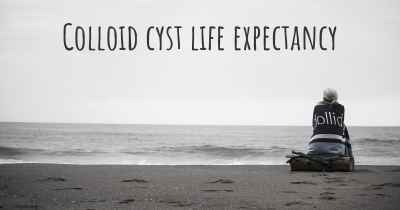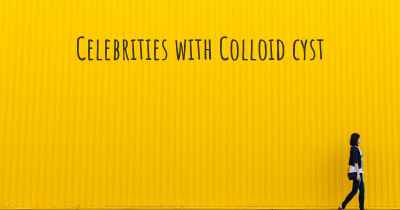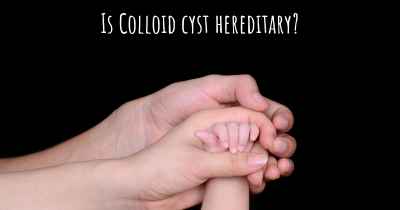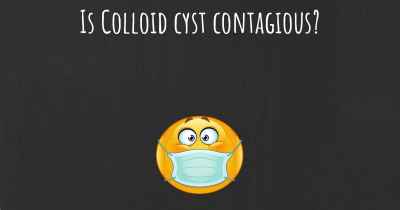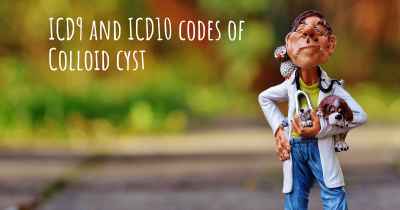What is the history of Colloid cyst?
When was Colloid cyst discovered? What is the story of this discovery? Was it coincidence or not?
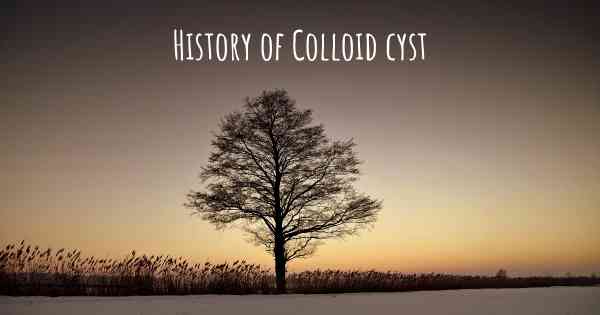
A colloid cyst is a rare type of brain cyst that typically occurs in the third ventricle, a fluid-filled cavity in the brain. These cysts are composed of a gelatinous substance called colloid, hence the name. Colloid cysts are usually small in size, ranging from a few millimeters to a few centimeters, but they can cause significant health issues due to their location and potential to obstruct the flow of cerebrospinal fluid (CSF).
Historical Background:
The history of colloid cysts dates back to the early 19th century when they were first described by anatomists and pathologists. The term "colloid cyst" was coined by the German pathologist Rudolf Virchow in 1855. However, it wasn't until the 20th century that significant advancements were made in understanding and treating these cysts.
Advancements in Diagnosis:
In the early years, colloid cysts were often discovered incidentally during autopsies or surgeries performed for unrelated conditions. The development of neuroimaging techniques, such as computed tomography (CT) and magnetic resonance imaging (MRI), revolutionized the diagnosis of colloid cysts. These imaging modalities allowed for non-invasive visualization of the cysts, enabling early detection and appropriate management.
Understanding the Pathology:
As medical knowledge advanced, researchers began to investigate the underlying pathology of colloid cysts. It was discovered that these cysts originate from remnants of the primitive embryonic brain tissue, known as the roof of the third ventricle. The exact cause of their formation is still not fully understood, but it is believed to be related to developmental abnormalities during fetal brain development.
Signs, Symptoms, and Complications:
Colloid cysts are often asymptomatic, meaning they do not cause any noticeable symptoms. However, when they grow in size or obstruct the flow of CSF, they can lead to a condition called hydrocephalus. Hydrocephalus occurs when there is an accumulation of CSF in the brain, causing increased pressure and potentially damaging brain tissue. Symptoms of hydrocephalus include headaches, nausea, vomiting, cognitive decline, and in severe cases, coma or death.
Treatment Options:
The management of colloid cysts depends on various factors, including the size of the cyst, the presence of symptoms, and the risk of complications. In the past, surgical intervention was the primary treatment option. However, with advancements in endoscopic techniques, minimally invasive procedures have become more common.
Endoscopic procedures involve accessing the cyst through a small incision in the skull and using specialized instruments to remove or fenestrate the cyst wall, allowing for the drainage of CSF. This approach offers several advantages over traditional open surgery, including shorter hospital stays, reduced risk of complications, and faster recovery times.
Ongoing Research:
Despite significant progress in the diagnosis and treatment of colloid cysts, there is still ongoing research to further understand the underlying causes and improve management strategies. Scientists are exploring genetic factors that may contribute to the development of these cysts, as well as investigating potential non-surgical treatment options, such as targeted drug therapies.
Conclusion:
Colloid cysts have a fascinating history that spans several centuries. From their initial description by anatomists to the modern advancements in diagnosis and treatment, our understanding of these cysts has significantly evolved. With ongoing research and technological advancements, the future holds promise for improved outcomes and better quality of life for individuals affected by colloid cysts.
Posted Aug 14, 2017 by Jane Mcneill 2100
Posted Aug 14, 2017 by Julia 2733
Posted Oct 13, 2019 by dgustafs 2550
